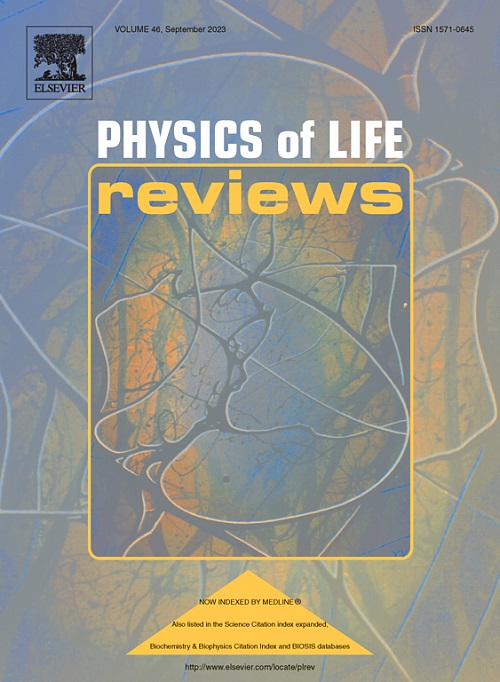脑动力学塑造认知-时空神经科学
IF 14.3
1区 生物学
Q1 BIOLOGY
引用次数: 0
摘要
当前的神经科学面临着认知功能和神经动力学之间的分歧。认知功能通常是在与任务相关的活动中研究的,而神经动力学是大脑自发活动的一个关键特征,在静息状态下测量。动态和认知是如何联系在一起的?虽然神经动力学本身已被很好地理解,但它们与认知功能的关系和影响仍不清楚。解决这一差距是我们论文的目标。为此,我们首先回顾了最近关于神经变异性和内在神经时间尺度(INT)等动态特征如何塑造各种认知功能的研究结果。然后,我们将视野从特定任务的前景活动扩展到大脑神经活动的更深的背景层——它的任务非特异性和自发活动。这导致我们提出一个大脑的动态层模型(DLB)。利用经验和计算证据,我们展示了神经变异性、INT和其他动态特征(如无标度动态)如何将这三层神经活动联系起来。接下来,我们展示了从自发的任务非特异性到任务特异性活动的这三层如何调节大脑动态形成认知的四种时间机制:从输入动态的时间编码和整合到时间支架和认知输出的分割。我们得出的结论是,大脑的神经动力学在后台运作,以一种时间动态的方式塑造了神经前景的认知功能及其内容。这一观点是时空神经科学的核心,它通过揭示大脑的内在动态如何塑造我们的认知,提供了比认知神经科学更广泛的框架。本文章由计算机程序翻译,如有差异,请以英文原文为准。
Brain dynamics shape cognition–Spatiotemporal Neuroscience
Current neuroscience faces a divide between cognitive function and neural dynamics. Cognitive function is typically studied during task-related activity, while neural dynamics are a key feature of the brain’s spontaneous activity, as measured in the resting state. How are dynamics and cognition connected? Although neural dynamics themselves are well understood, their relationship to—and influence on—cognitive functions remain yet unclear. Addressing this gap is the goal of our paper. For that purpose, we first review recent findings on how dynamic features like neural variability and intrinsic neural timescales (INT) shape various cognitive functions. We then expand our view beyond task-specific foreground activity to the deeper background layers of the brain’s neural activity—its task-unspecific and spontaneous activity. This leads us to propose a Dynamic Layer Model of the Brain (DLB). Drawing on empirical and computational evidence, we demonstrate how neural variability, INT, and other dynamic features (such as scale-free dynamics) connect these three layers of neural activity. Next, we show how these three layers from spontaneous over task-unspecific to task-specific activity mediate four temporal mechanisms through which brain dynamics shape cognition: these range from temporal encoding and integration of input dynamics to temporal scaffolding and segmentation of cognitive output. We conclude that the brain’s neural dynamics operate in the background, shaping the cognitive functions and their contents in the neural foreground in a temporal-dynamic manner. This perspective is at the core of Spatiotemporal Neuroscience, which provides a wider framework than Cognitive Neuroscience by revealing how the brain’s intrinsic dynamics shape our cognition.
求助全文
通过发布文献求助,成功后即可免费获取论文全文。
去求助
来源期刊

Physics of Life Reviews
生物-生物物理
CiteScore
20.30
自引率
14.50%
发文量
52
审稿时长
8 days
期刊介绍:
Physics of Life Reviews, published quarterly, is an international journal dedicated to review articles on the physics of living systems, complex phenomena in biological systems, and related fields including artificial life, robotics, mathematical bio-semiotics, and artificial intelligent systems. Serving as a unifying force across disciplines, the journal explores living systems comprehensively—from molecules to populations, genetics to mind, and artificial systems modeling these phenomena. Inviting reviews from actively engaged researchers, the journal seeks broad, critical, and accessible contributions that address recent progress and sometimes controversial accounts in the field.
 求助内容:
求助内容: 应助结果提醒方式:
应助结果提醒方式:


